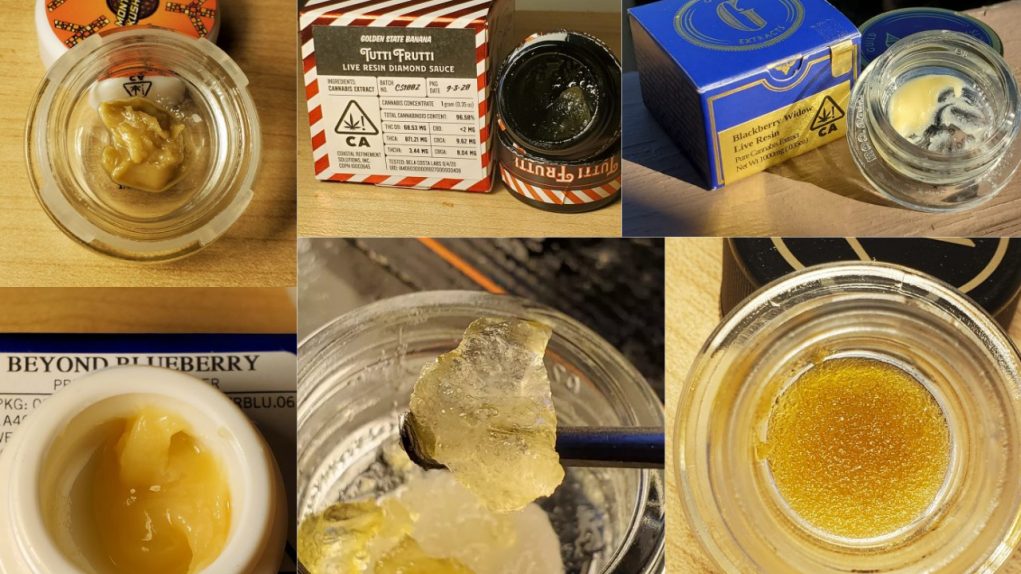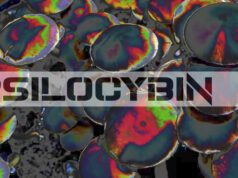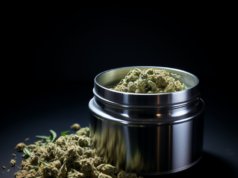A cannabis extract is any non-solid substance derived from marijuana for the purpose of consumption via dabbing. When we first started DabConnection, there were maybe half a dozen major forms of dab extracts. Since then, improvements in extraction technology together with the steady march of legalization has led to an explosion in extract varieties.
Originally, we were trying to give each extract category its own glossary page. However, it’s not always worth it when the difference between one extract or another would be basically “this one is moister and a bit runnier than that one.”
Hence, our catch-all extracts reference!
The Spectrum of Extract Consistency
Everything on this list pertains to the consistency of the extract. Just as fruit preserves may come in the form of jams, jellies, and marmalade, cannabis extracts may come in any of these consistencies. Most of them have no bearing on the classes of extracts (further down). Mostly the consistency affects how it vaporizes on the nail, how easy it is to handle with a dab tool, whether you can use it with a nectar collector, and so on.
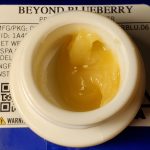
Badder – By extension from “budder,” this has a moister and more runny consistency than budder, most closely resembling cake batter. Also just called “batter.”
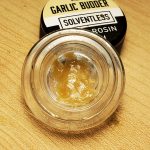
Budder – A portmanteau on the name “bud” for marijuana and “butter” for the dairy product. Budder has the consistency of butter, actually spreadable margarine more than a solid stick-style butter. Similar to wax.
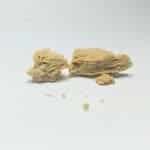
Crumble – A dry, crumbly consistency, sort of like peanut mazapan or sesame seed halvah. Drier than wax.
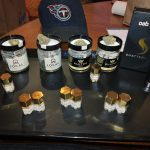
Dablet – A compressed, hard tablet of extract, made specifically for convenience in dabbing.
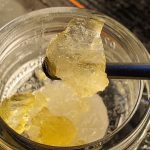
Diamonds – A hard, chunky, crystallized texture, exactly like the gemstone, but given an appearance more like quartz. Diamonds are formed by pressurizing extract. More on diamonds here.
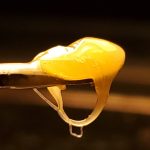
Jam – A runny, gooey consistency like the jam you spread on toast. Very similar to sauce.
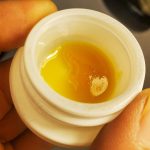
Sauce – An even runnier consistency resembling spaghetti sauce or Sriracha.
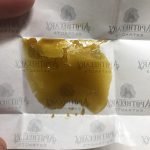
Shatter – A hard, crystalline consistency similar to a Jolly Rancher candy or glass. One of the earliest types of extract. Almost always served on paper, plastic, or some kind of backing. You break off a chunk of it at a time, so it shatters. If shatter has a moister, stretchy consistency, it’s sometimes called “pull-and-snap.” More on shatter here.
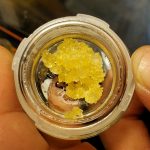
Sugar – A granulated consistency similar to wet sand. This is typically the same thing as diamonds, but broken down into tiny grains.
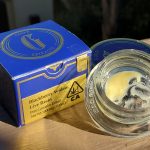
Wax – A firm, but pliable, cheese-like consistency like a drier form of budder. One of the earliest types of extract. More on wax here. “Wax” is also sometimes used as a general catch-all term to mean “any cannabis extract,” as opposed to “dry herb” for full flower.
You may also see some consistencies mixed together. “Diamond sauce” means diamonds in a sauce, “sugar jam” can be a jam consistency with some sugary granules in it, and so on.
The various consistencies are often down to extraction methods combined with post-processing steps. Whipping an extract, the same way you whip cream, can produce the wax, budder, and pasty consistencies. Drier consistencies like crumble have been agitated before purging the solvent. Diamonds are created by refining a distilled extract down to its purest form. Much of this depends on whether you’re working with resin or rosin.
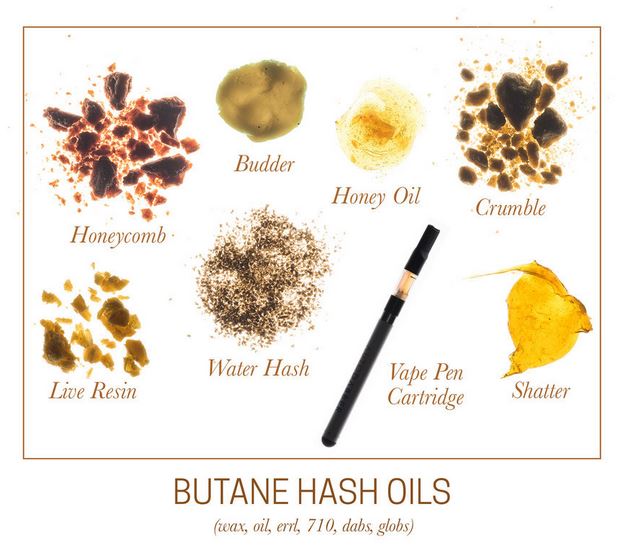
The Classes of Extract Methods
There are now dozens of ways to extract cannabinoids from plant matter and turn it into a dab-friendly substance. New ones are coming up all the time. Briefly, you get “juice out of the plant” by either heating and compressing it to squeeze it out (the “solventless” method), or run some solvent liquid through the plant, then extracting the solvent from the resulting liquid.
Note, when we squeeze the extract from the plant, that gets rosin. When we use some liquid medium to wash the extract from the plant, that gets resin.
BHO – Stands for “butane hash oil” or “butane honey oil,” one of the most popular methods of extraction. You stuff the plant matter into a tube, pipe the butane through it, then you have liquid plant resin mixed with butane. This process resembles the way you make espresso. You purge the butane out using vacuum and evaporation. Much more detail on BHO here.
CO2 – An alternative liquid solvent method. CO2 (carbon dioxide) is liquid at extremely cold temperatures. The rest of the process is almost identical. While CO2 extraction is safer than using the highly flammable butane, it doesn’t result in as rich an extraction as BHO without additional processing. CO2 extraction is also more expensive equipment-wise.
Cold Cure – Not an extraction method in itself, but a term for using ice water or frozen plant material in the extraction process.
Cured – Another step in the extraction process. “Curing” is typically applied to the plant matter itself, by a process of aging or dehydrating the plant matter in order to remove moisture or chlorophyll. If it’s “cured live resin,” that means it’s resin extracted from a cured plant.
Fresh Press – A method of pressing rosin from hash, after an ice water treatment. After that, the rosin processing is identical.
Hash – Not an extraction method by itself, but a step. Here’s what we do: The part of the bud where the most active ingredients are concentrated is called the trichomes. We’re going to separate the trichomes from the rest of the plant (some combination of freezing, washing with ice water, and agitation), making what we call “kief.” Then compress the kief, a light dusty powder, into firm bricks or sheets and that’s “hash.” The hash may then be subject to any of the other extraction methods we cover here, just like the whole plant would.
High Terpene Extract (HTE) – As the name suggests, this is an extract that concentrates terpenes.
Ice Water – Using ice water to extract cannabinoids from plant matter. While it’s a simple and cheap method, it is also the least efficient of extraction mediums. Recently, refinements and improvements in technology have brought ice water as a solvent medium back into the spotlight. Popularized by advocate Rick Simpson, maker of RSO (Rick Simpson oil). More on RSO here.
ISO – Using isopropyl alcohol as an extraction solvent. Nearly identical to butane extraction otherwise. Also safer than butane, but also less efficient.
Rosin (Live) – Rosin is basically the cannabis plant “sap,” squeezed out of it under high pressure and moderate heat. Mostly this is done with a rosin press, but the “hippie at home” method has used a hair straightener. Once rosin is extracted, it may be subjected to several of the other processing steps listed here. When rosin is referred to as “live rosin,” that just means is was extracted from freshly harvested plant material that has not been frozen, dried, or cured. More on rosin here.
Resin (Live) – As we mentioned above, resin is the result of using a solvent to extract cannabinoids from plant matter. When it’s called “live resin,” that means this was done on fresh plant material that has not been frozen, dried, or cured. More on live resin here.
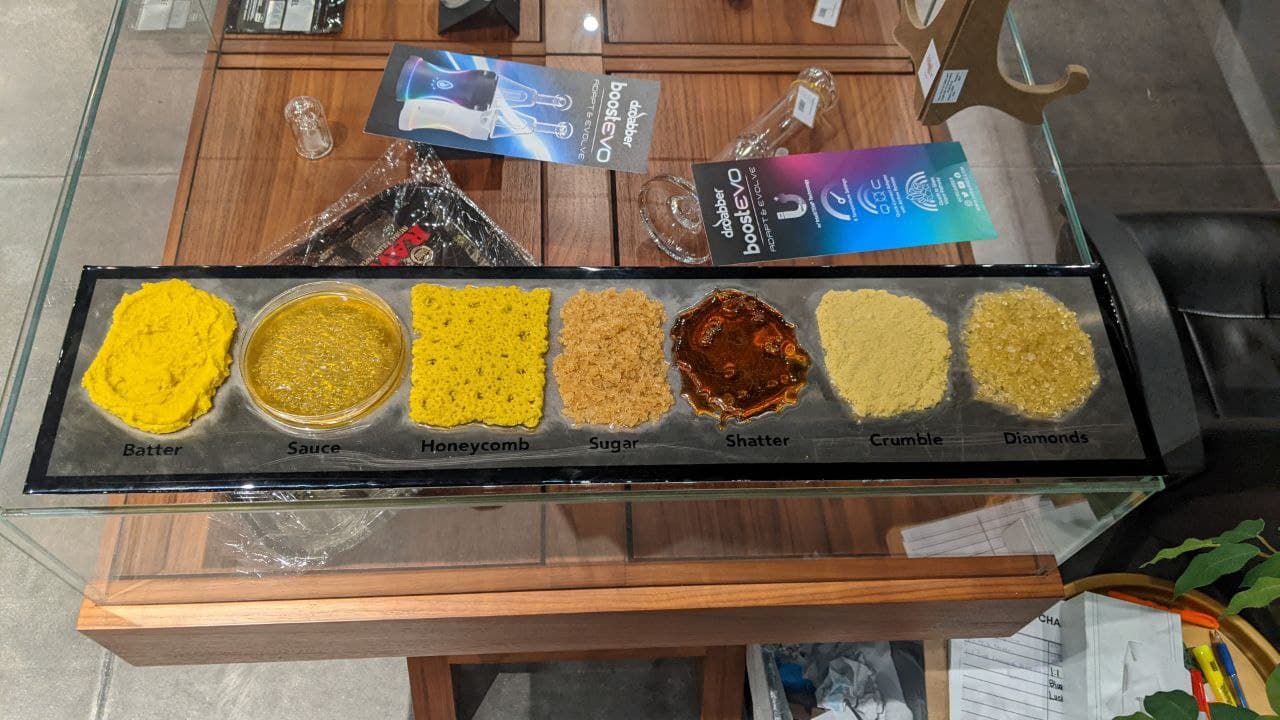
Dabbing extract examples
Here’s a few products we’re reviewed which demonstrate some of the different combinations of extract methods and consistencies:
Live resin diamonds – Fresh plant, extracted with a solvent, pressurized into pure THCA.
Live badder – Fresh plant, extracted with a solvent, whipped to form a creamy consistency.
Fresh press live rosin – Starting with hash taken from fresh plant, then squeezing into rosin. Yes, they can do this.
CO2 shatter – Standard clear taffy product
Live resin diamond sauce – Fresh plant, solvent extracted, compressed into diamonds, sauce added.
Extraction methods not used in dabbing
Just to avoid confusion, there are even more ways to extract cannabis compounds that aren’t used in dabbing at all.
Tincture – Using food-grade alcohol as a solvent of sorts, infusing the alcohol with cannabinoids. Typically Everclear is the alcohol of choice. Weed must be decarboxylated first since this produces an edible substance.
Cannabutter – A method of using food-grade oils, such as coconut oil, as a solvent to extract cannabis compounds into oil for the purpose of making edibles. Recipe right over here. Cannabis peanut butter recipe here.
Distillate – Typically starting from rosin, this is a process where we produce oil for vaping in vape cartridges. It produces concentrate, and has far higher THC percentages than most other cannabis extracts.


